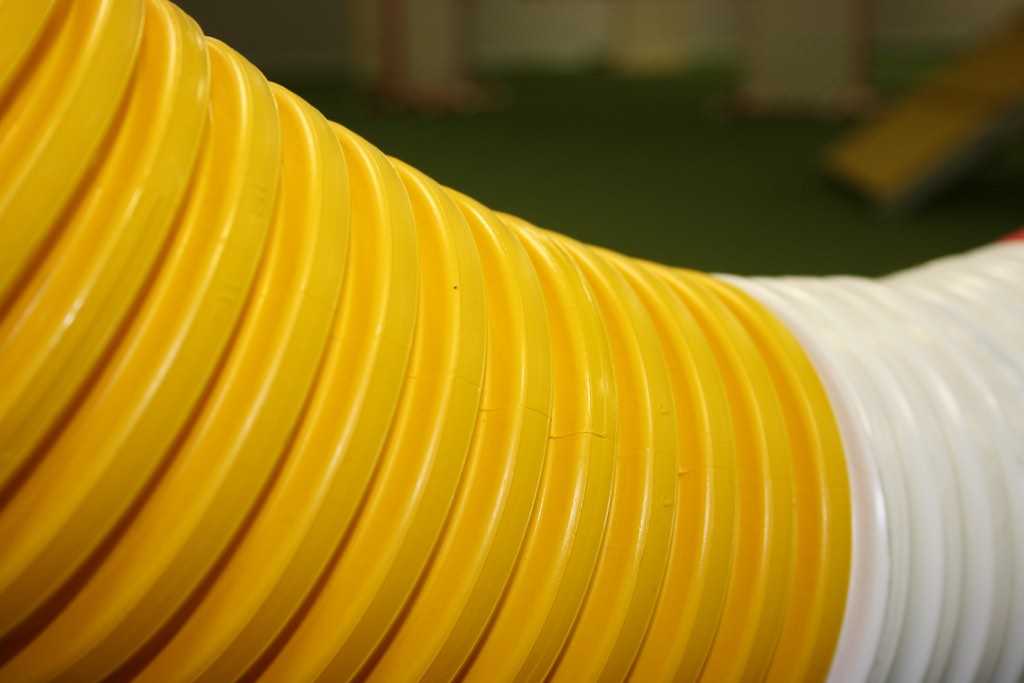Moving Towards Mastery: Move Obstacles to Challenge Your Handling
28 Jan 2016
Update 2016-Feb-16 agilitycourses.com now does this for all Box seqeunces automatically! here are the details.In this second in a series of articles I’ll show you another way to improve the quality of your training; even in a small space with a few obstacles. In my first article I showed how you can by changing your dog’s path through the same sequence. Now I want you to see the benefits and challenges of moving the obstacles with the same sequence.
Most training sessions, that work on sequencing, simulate trialing. A course is set up and the handler works out the best path for the dog and comes up with a few handling approaches to help the dog run the best path. But once you’ve solved that handling puzzle you are basically done with the course. So then the search for another “interesting” sequence starts again.
I’m demonstrating this idea with a Box Box/Hobday Box/Jump Box/Jump SquareDouble Box SequencesDo It Yourself Box Jump SequencesDouble Box Sequence GeneratorJump Box DrillsJump Box Drill GeneratorNew Jump Box Sequence GeneratorStar Box SequencesStar Box Sequence GeneratorThe Jump Box in Course Design layout for it’s ease of use (you don’t need a lot of space and only four jumps) and it’s all you need to thoroughly challenge your handling!
So my idea is simple and it’s a variation on the idea in my first article. Set up the obstacles with a numbered sequence through them and run the sequence. Then just move the obstacles and the numbers with them! It’s easy to do but the courses you end up with might not be!
Let’s look at an example. Here is a simple Box setup with a sequence of eight numbers. From a handling perspective it works four common handling elements: 270s Mr Peabody in UKC Bloodlines MagazineHandling 270 Degree Jump SequencesBack Side Entry to 270/Training Opportunity - Video270 Degree Jump Sequence, Back Sides Handling the Quad Back Side - Patrick Bucher Course/VideoThe Connection Between Threadles and Back SidesBack Side/Back Side JumpBack Side of Jump Handling Combinations - Video, Threadles Mary Ellen Barry on Threadle HandlingSingle Sided Threadle HandlingThe Connection Between Threadles and Back SidesTraditional Threadle HandlingThreadle Sequence and Jump Wraps Jump Wrap Handling - With VideoJump Wrap Handling TipsJump Wrap/Wrap:
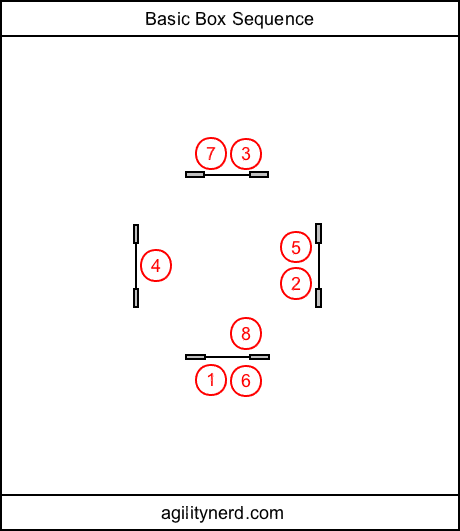
Here are sixteen different dog paths through the sequence that you could work on. But if you also move the obstacles you can further increase the challenges.
The first challenge is to reduce the distance between the obstacles to work on your timing when your dog is moving at minimum jump distances and then to work the same setup with the obstacles at much further distances:
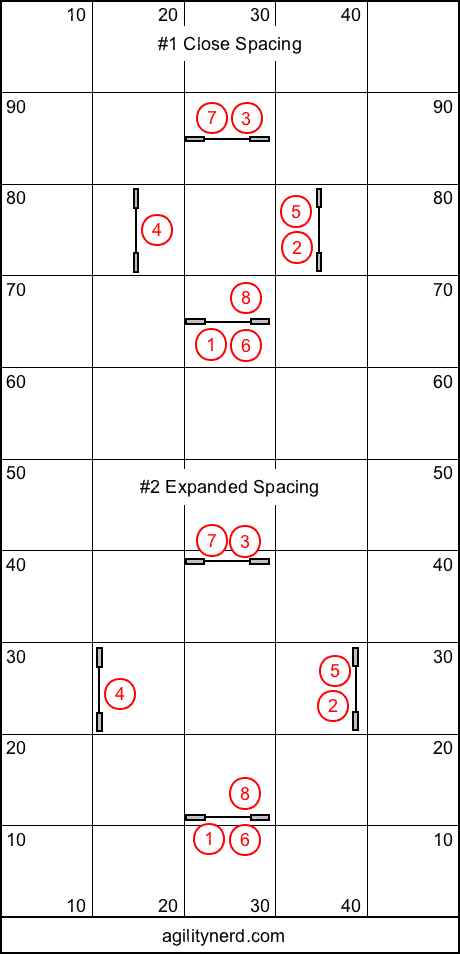
If you shift the side jumps down past the start jump (or up past the top jump) the straight on approaches to the side jumps become Threadles or Wraps and getting to the jumps may require passing other obstacles. You’ll also find you have to move longer distances between some obstacles to the Back Sides. The same is true if you shift the top and bottom jumps left or right past the side jumps:
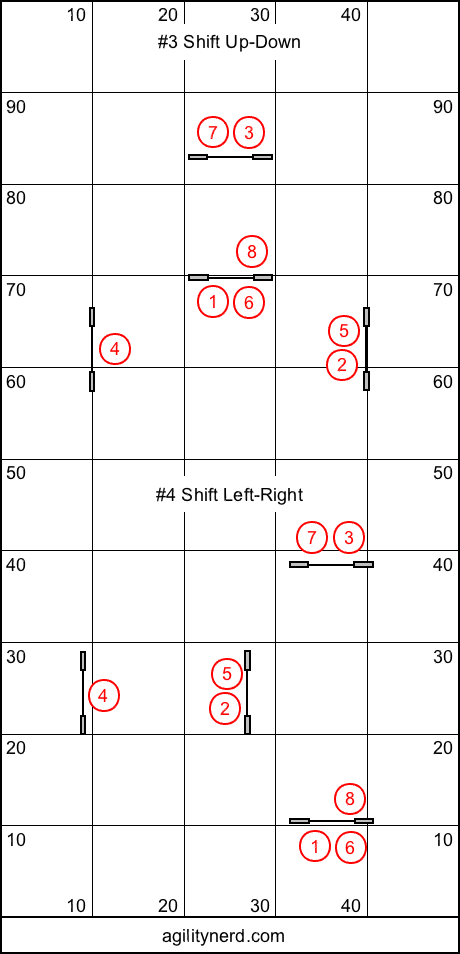
How about sliding in opposite directions? In the top diagram look at 1-2-3 and even better is 5-6-7-8! Or centering the jumps on the center line of each jump to work on edge-on jump approaches:
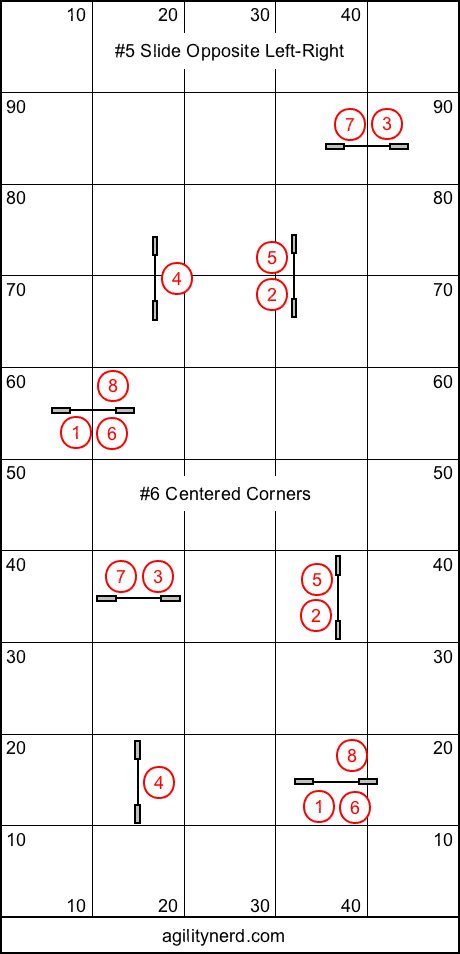
If you start rotating the jumps you get to work on sliced approaches and Serpentines Serpentine Handling TechniquesSerpentine Sequence and either pushing to the Back Side between jumps or pushing to the far side of a jump to get to the Back Side:
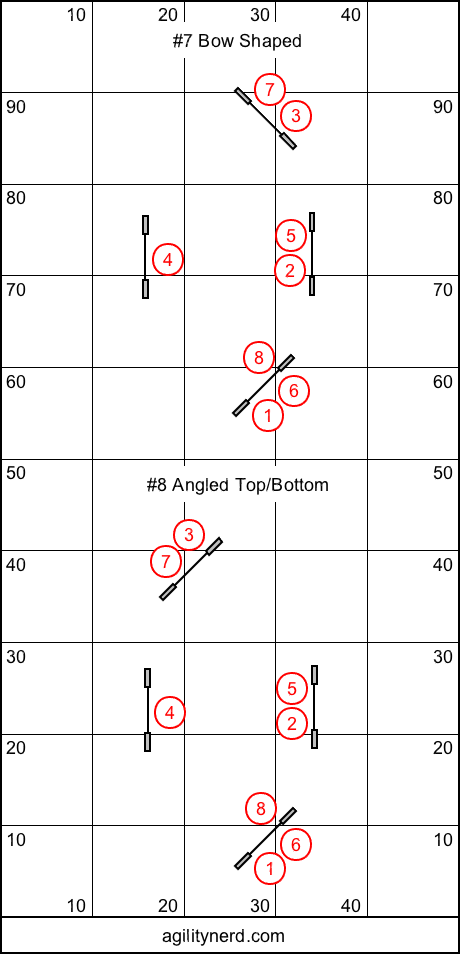
Of course these eight layouts are just some examples; you can come up with many more!
And almost all of the 16 dog path options for the first box sequence are also possible with each of these jump layouts! Holy Moley that's a lot of training with just four jumps in a small space!More importantly by moving the obstacles around with the same sequence it will push you out of your comfort zone, you won’t just find a different sequence with challenges you know how to handle. It’ll have you combine handling “moves” in ways you haven’t tried before, and make you really think about how you are going to handle it.
So don’t just go looking for another sequence, keep changing the course layout to push you into tackling tougher challenges and then mastering them!
If you enjoyed this article won't you please:  Thanks!
Thanks!
Related Tags
Related Articles:
- Moving Towards Mastery: 14 Layouts to Challenge Your Handling
- Moving Towards Mastery: Change Paths to Challenge Your Handling
- Backyard Mastery - Move It!
- Backyard Handling Mastery: 2 Jumps + Tunnel = 24 Challenges
- Multiple Dog Paths to Challenge You Handling
- Starters/Advanced/Masters Challenge Small Space Courses
